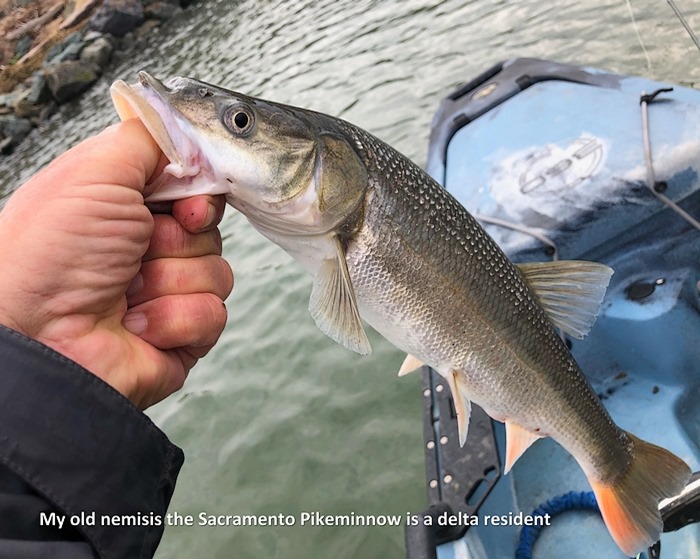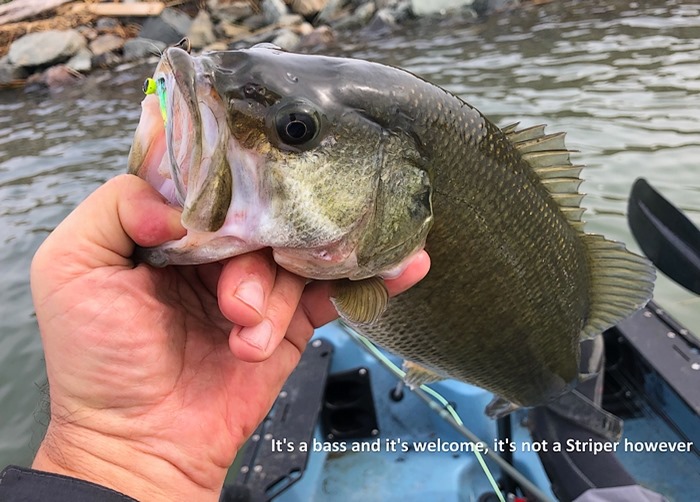Contrary to what you think of retirement, the reward is not being able to watch Saturday morning cartoons uninterrupted, rather it’s fishing on weekdays while all the drunken Meatheads embody cartoons as they crowd the launch ramp on weekends.
After 30 years of toiling for CALFIRE, we parted on good terms and I took some accumulated time on the books from pressing emergencies and late-night phone calls – and gifted myself a “Yak”, or fishing kayak, and the ability to wield it in retirement whenever the mood suits me.
Fishing kayaks require a lot of thought and configuration to suit fly fishermen, and I’m still learning what works and what doesn’t. How to optimize storage, how to NOT carry everything with me, how not to lose it all when I flip the boat, and more importantly – how not to leave anything on the deck without thinking about the coils of fly line underneath and how the kinetics play out when I release the cast …
Hint: Sploosh.
I’ll elaborate on my final configuration and more importantly – how to fish out of these shortly, once I’ve got enough hours to be a credible source. Fly fishermen have little experience fishing from boats that move while casting – and pedal powered kayaks allow both versus having to wield a paddle to move. Float tubes are stationary objects and prams bob contentedly in place but if your boat is moving while the cast is in the air a mess ensues as you have new things to snag with your line and new gods to invoke while swearing mightily at great puddles of fly line being run over by your boat.
This week was the California Delta, and the pursuit of Striped Bass – which like every other gamefish I’ve targeted – gleefully thumb their nose at me despite my new “water-legs.” While my pedal kayak and angling pastime has now been blessed as “heart healthy” by all lab coated professionals, the Striped Bass remained unimpressed and likely pirouetted around me while I pedaled around the confines of “Sherman Lake” and Sherman Island proper.
“Sherman Lake” is just a wide spot in the Delta at Sherman Island, and is a popular spot for duck hunters, striper and sturgeon fishermen (in the main channel), and hosts the occasional wind surfer or kayak angler. It is about 1.2 miles across and has five or six miles of bank ranging from rock jetties to dense Tule mats. With pedal power I can cross in about 15 minutes – but have to factor in drunken boaters, waves caused by wind or tides, and everything else that haunts a navigable body of water.

I did find seventeen new ways to penetrate my fat frame with really large and sharp fish hooks. All wounds were aided by bead chain eyes (Whistler), lead hourglass eyes (Clouser), and anything else capable of being lashed to a fish hook and able to turn a timid false cast into a lethal weapon. Most involved hastily applied tourniquets and a great deal of swearing, which may be why the bird watchers gave me a wide berth.
Kayak fishing in a heavily trafficked waterway is not for the faint of heart. Boat wakes and the boating curious can send enough water in your direction to give your small craft a fit if you’re not paying attention. Stability dictates your bisecting the oncoming wake with the bow of your craft, versus getting hit broadside by the wave, and the unwary angler can be sorting a tangle of running line, or netting a fish, unaware of the new threat and a little too much lean coupled with the arrival of the swell can lead to a rollover.
… which is why everything of value has to be tethered to your craft or should float unaided. Fishing vests are no longer an option as you need to wear a life jacket, so storage of all the little things; tippet dispensers, hook hones, and fly boxes has to be rethought as well.
Petite flies and the gossamer fly rods of stream fishing are replaced by those capable of hurling an entire chicken saddle or bucktail with ample lead. Casting skills are essential as you’ve got to impart lift to a rapidly descending Clouser Minnow, a fly which shares the aerodynamic profile of a paving stone, and with only a single double haul or you’re going to wear the fly instead of the fish. Rods and flies are heavy, and casting them all day requires minimal “air” time; one roll cast to bring them to the surface, one false cast to get them aloft, one double haul to impart momentum – then fling the accumulated mass as far from you as possible to avoid injury.
Despite all of the environmental and platform changes, all of the rod and fly differences, and despite the vagrancies of migratory fish and tides, it’s comforting to know that my ignoble pal, the Sacramento Pikeminnow, is a delta resident – and while not as showy as a Striped Bass, has also been sucked South due to all the lawn irrigation in SoCal.

They’re quite a bit bigger and silvery versus the yellow variant in my local creek. The Good News is they retain their aggressive nature and swallow a six inch Clouser with as much gusto as smaller flies. It was a welcome grab given how much water I covered and how little I had to show for all that effort.
The first day I crossed to the West side and fished the Tule mats, with a lone Pikeminnow my only seduction. The second day I drifted the rock jetty on the East side and caught both Largemouth Bass and Pikeminnow but no Stripers. I saw a few fly fishermen in the main body but the frequency of their movement suggested their luck was identical to mine, fish scarce and Stripers scarcer.

I’ll continue to investigate the area as the tides permit. The fish are typically here most of the Winter, but tides determine the useful fishing hours and many occur too early or too late to fish. Most folks familiar with the area insist on fishing the incoming tide but others like any tide movement, both incoming and outgoing. This is consistent with all the Striper fishing I did in San Francisco Bay – as the fish were active on any tide so long as it was moving.
Trip Log: External temperature 70 degrees. Fished the incoming high tide until slack tide. Water temperature 58 degrees. Flies used: assorted experimental ribbon yarn streamers, Flo Green Clouser, Shad Clouser, White Whistler.

